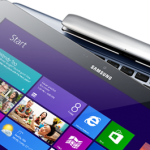
Anyone who has developed a smartphone app would have set up servers and built backend services such as location services to support the app. You could do this on your own servers, or tap on IaaS and PaaS providers like Amazon Web Services (AWS) and Cloud Foundry.
But whether you choose to build and host your app in-house or through the cloud, you’d still need to deal with social media integration and set up virtual machines, user profile services, and more.
In the past year, a handful of startups have formed a new category of cloud services known as backend-as-a-service (BaaS) to ease the task of setting up the nuts and bolts for running mobile apps. The new players such as Kinvey, Parse, CloudMine and more recently, FatFractal, all provide mobile backend services such as data storage, push notifications and user management.
“The BaaS players are providing application developers with an instant backend so that they don’t have to manage one,” says FatFractal’s chief marketing officer David Lasner.
While developers can turn to the likes of AWS to build a mobile backend, they have to configure their cloud infrastructure extensively, such as defining an event model that triggers what happens when a user, say, checks in at the same location several times a week.
“And you’re wiring it all together every time you want build an application,” Lasner says.
“What we were looking for is something that would give you the native code support, an event model and security that works, so you can stop using the heavy stuff on the enterprise side. You have some pretty smart people out there, but it was still incredibly hard to build these cloud-based apps. That’s why we built the FatFractal platform,” he adds.
The new BaaS offerings have the potential to upset the status quo in enterprises that typically control who develops apps and how apps should be developed, says FatFractal’s president Kevin Nickels.
“At the strategic level, they should think about how every employee should be able to write an app, or that customers should be able to write their own apps and access corporate information they way they want to. That’s a really hard thing for an IT department to wrap its head around,” he says.
According to Lasner, FatFractal took about two years to build and allows programmers to write applications in native environments such as Java and Objective C.
“You’ll also get out of the box services integrated in your object oriented world that allows you to do some complex modeling,” he says, “I often joke that if the Facebook team used the FatFractal platform, all the problems they had with the privacy of photos and groups would have taken a month to resolve.”
FatFractal also provides access into the backend, which not all BaaS players allow, according to Lasner. “That’s a problem because if you’re going build a software architecture for the cloud, most of the heavy lifting should happen on the backend. So, while it’s great to not think about data stores, I also want my business logic, events model and custom code to run on the backend”.
As an engine-based platform, FatFractal also allows developers to use familiar technologies to write apps and run the platform, including data stores and services, locally on their own PCs before deploying to the cloud. “Developers love to build things on their own machines because all the tools they’re using are available there, and you don’t have to rely on a network.”
A concern among companies considering BaaS services is the risk that service providers could change pricing models or go bust. Lasner assures developers that there is no vendor lock-in with FatFractal, as the platform uses the same data models in standard programming languages such as Java. That means you can move your app to another infrastructure service or platform, Lasner says.
How developers will take to FatFractal and the other BaaS offerings remains to be seen. After all, to developers, IaaS, PaaS and BaaS are merely different parts of the larger cloud infrastructure required to run their apps.
As Nickels puts it, “there is no need for BaaS to be separate from PaaS; there are no separate markets and at some point, they are going to collapse into a single definition”.






